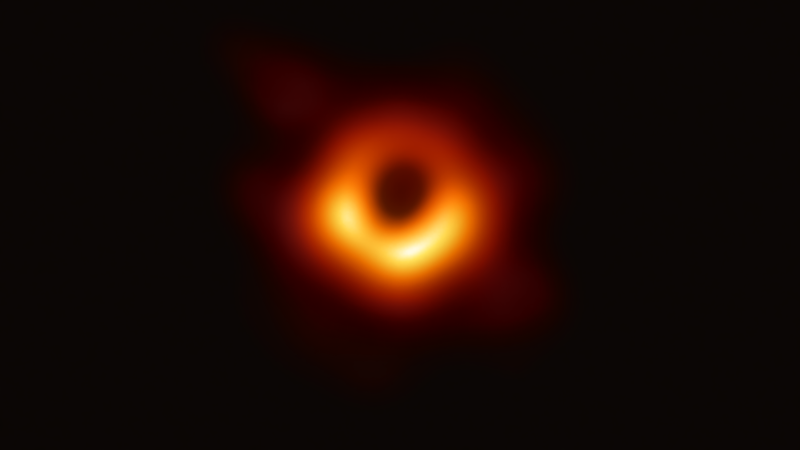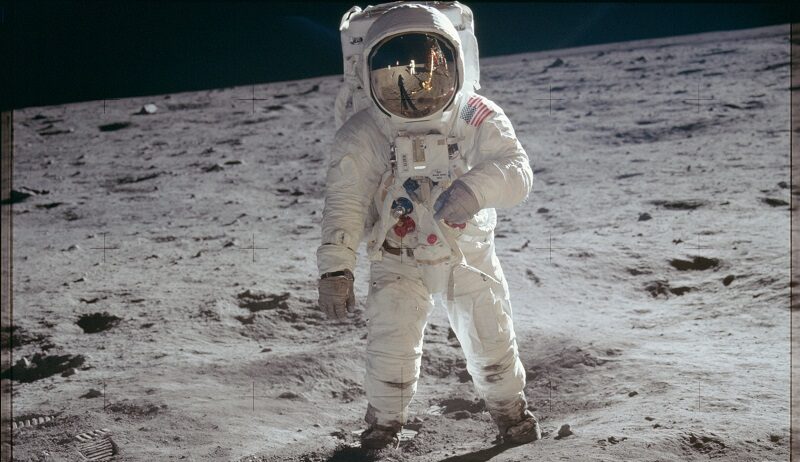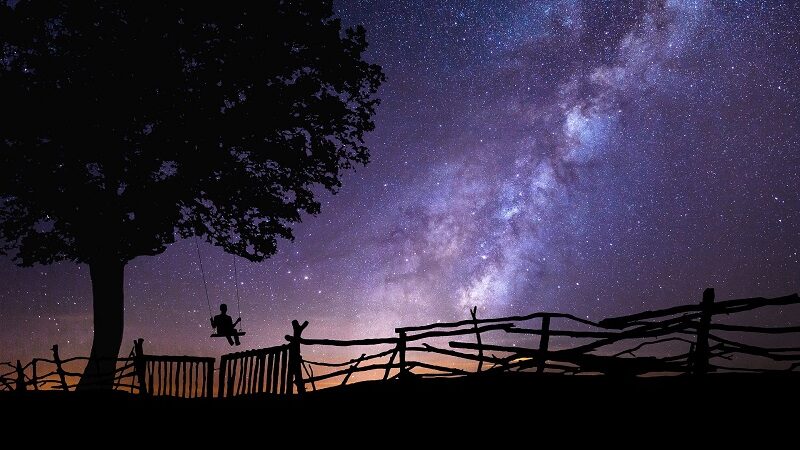Is there any other life “out there”? Is Pluto a planet? And: Why do we always see the same side of the moon? We answer the most common questions about space.
Space is fascinating for many people: so much space, unimaginable distances and so many things we don’t know or understand. It is logical that there are many questions about space.
Exactly that´s why this time we want to pick up most frequent questions about space – and answer them (as far as possible).
Is Pluto a planet?
If you want to see how astronomers get in trouble with each other, you should ask that question.
After all, Pluto was a planet for a long time. Then it was stripped of its planetary status. And now many people are not happy with that – and have both good and less good reasons for it.
But first things first.
Pluto was discovered by Clyde Tombaugh on 18 February 1930. It quickly became clear that this was a new planet in our solar system. Then, thanks to better technology, the celestial body Eris was finally discovered in 2006. It was only slightly smaller than Pluto and even slightly heavier.
This started the debate. Should the celestial body become the tenth planet? If so, many other celestial bodies of similar size and mass would suddenly all become planets, such as Makemake and Haumea, which were discovered in 2008.
The other option would be to revoke Pluto’s status as a planet.
So the worldwide authority for such issues, the International Astronomical Union (IAU), sat down together to clarify the issue. The result was a definition of planets. To be a planet, a celestial body must meet three conditions:
- It must be in orbit around the sun.
- Because of its mass, a planet should have a round shape.
- In its orbit, a planet must have cleared its surroundings of other bodies.
Pluto cannot fulfill the third condition and is since then considered a dwarf planet. It must be said, however, that the IAU was anything but unanimous, especially on the last point of this definition. Because if you take it very strictly, even the Earth does not fulfil this condition.
Therefore, many did not agree with the decision. That is why there are always proposals to use other criteria for the definition, such as the geology of the celestial bodies. Pluto, for example, has mountains, weather and an atmosphere, as we know from the New Horizons mission in 2015.
Many astronomers are therefore calling for Pluto to be reintroduced into the circles of the planets. NASA head Jim Bridenstein has even officially reinstated Pluto as a planet (although this is only of limited relevance, as officially only the IAU can decide this).
And so the debate continues. Only this year, on the 90th discovery day of Pluto, for example, the Hamburg planetarium started the campaign #plutoforplanet.
On the other hand: In the 19th century, 38 celestial bodies were suddenly stripped of their planetary status at one stroke. Today they are asteroids – and nobody cries for them any more…
What happens if you fall into a black hole?
The honest answer is, I don’t know. That’s because black holes don’t emit light and therefore don’t transmit information to us. So we actually only see things falling into them, but not what happens to them afterwards.
Some people believe that you just die or are destroyed by the strong attraction. Others believe that we can get into other dimensions or a parallel universe.
In 2019, we succeeded in taking a picture of a black hole for the first time. It lies in the galaxy Messier 87 and is 55 million light years away from Earth.

Are there other life forms in the universe?
Of course, no one can answer this question with absolute certainty. On the one hand, the conditions on our planet, from gas concentration to gravity, are so special that it shows: it is not so easy to create good conditions for life forms in the universe.
On the other hand, the universe is so large that one can also ask the other way around: Why shouldn’t there be forms of life in all this space somewhere else?
How many stars are there in the sky?
From the Earth with the naked eye, 4,548 stars can be seen per hemisphere, making a total of 9,096. Around the North Pole, in turn, up to 6,800 stars can be seen because of the position of the Earth’s globe.
Of course, these are by no means all the stars in the sky, but they might be interesting if you think you see an infinite number of stars in the night sky. Nope, there are only “a few” thousand.
In the whole universe it looks different, of course. But here you can only guess. The European Space Agency ESA proposes the following calculation.
In our galaxy we count between 1011 and 1012 stars. In the entire universe, we again assume a number of 1011 to 1012 galaxies. This results in a total number of 1022 to 1024 stars in the sky, i.e. a quadrillion stars.
Logically, this is only a rough estimate, because the number of stars is not the same in all galaxies.
Can stars be bought?
Stars are not for sale, but their names are. But that too is a pretty big joke. Because just as the IAU decides which celestial bodies are planets, it is this organization that gives the celestial bodies, and therefore also stars, their names.
But now some clever new space companies have come up with this idea: why not let people “buy” stars and get paid for it?
For example, you can buy a star from companies like Cosmonova, Name A Star Live or Star Registration for as little as 20 Euros. In return you will receive a certificate with “your” star called “Sara” or “Thomas” or whatever you have chosen as name.
But: This name is neither recognized by other companies nor by the IAU. So it may well be that Cosmonova sold the same star to Peter as Star Registration sold to Mareike, without their knowledge.
But the official names of the stars do not change because of this.
So if you don’t manage to get the IAU to actually name a star after you, you are more or less throwing your money away when you buy a star – or you buy a very expensive piece of paper. As a romantic gesture, however, this may not matter.
Why do we always see the same side of the moon?
The moon needs 27.3 days to rotate around its own axis. That’s the same time it takes the moon to circle the earth once. Because of this bounded rotation we only see one side of the moon at a time. This “settling” is relatively common for planets and their moons.
But we can actually see a little more than half of the moon, about 60 percent. This is due to the elliptical orbit of the Moon, with which it orbits us sometimes faster and sometimes slower (while its own rotation does not change).
Because of this inclination we see sometimes more the western, sometimes more the eastern or more from the northern or southern latitude and therefore always a little bit beyond the “edges”.
This is no coincidence, but is due to the strong attraction of the earth. This has slowed down the rotation of the moon so much that the rotations have adapted. At the same time, the moon also slows down the rotational force of the earth.
As a result, our days are actually getting a little longer, about 16 microseconds longer per year.











